Mainland Italy, along with her two big islands, Sicily and Sardinia, boasts almost 5,000 miles of coastline. This means that travelers in search of sunlit beachside locales and gorgeous Italian seaside towns have ample terrain to choose from during their trips to this boot-shaped nation.
Coastal towns in Italy come in an assortment of sizes, from the bustling chaos of Naples’ narrow, well-trodden streets, to the architectural wonders of Sardinia’s Cagliari, or the colorful cliffside splendor of Positano.
Here are some of the most picturesque coastal towns, big and small, that Italy has to offer.
Sorrento
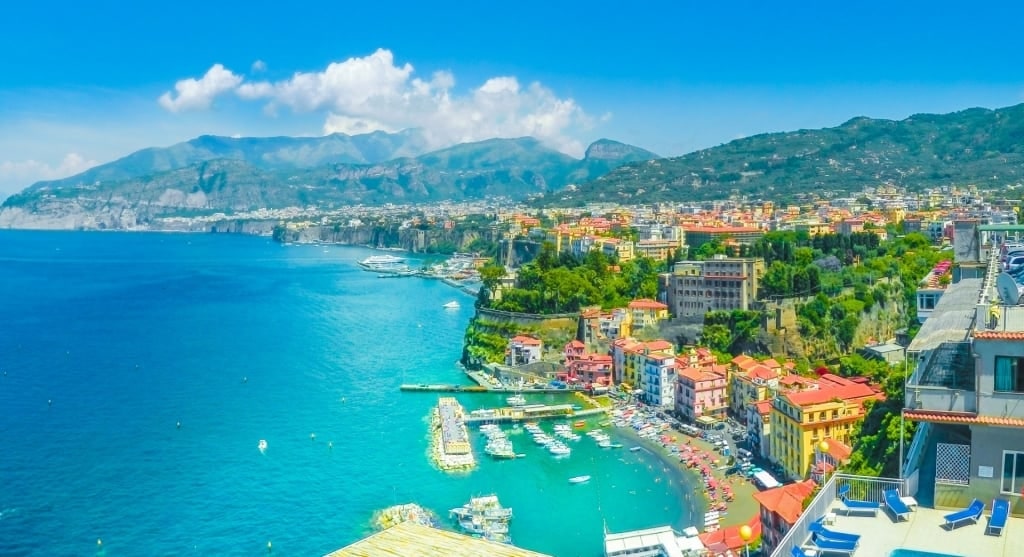
Sorrento
Sorrento, situated along the southern end of the Gulf of Naples, is one of the first places you’ll reach if departing from Naples for the celebrated villages built into the precipitous hillsides of the scenic Amalfi Coast.
This pastel-colored Italian seaside town, famous for lemons and citrus fruits, is carved into a high cliffside. Sorrento comes with outstanding vistas across the sea, and is ideal for whiling away an unhurried morning or afternoon.

Villa Massa Limoncello Distillery
If you need a rest from strolling the narrow streets, one of the best things to do in Sorrento is to stop for a chilled glass of the popular lemon-infused limoncello digestive, likely made by the Villa Massa Limoncello Distillery.
The busy Piazza Tasso, near the Old Town, and close to the small harbor, is a central hub busy with cars, mopeds, and horse-drawn carts.
You could also survey the Museo Bottega della Tarsia Lignea, located inside a very pretty and very red 18th-century palazzo, to learn more about the region’s inlaid wood marquetry tradition.
Cagliari, Sardinia
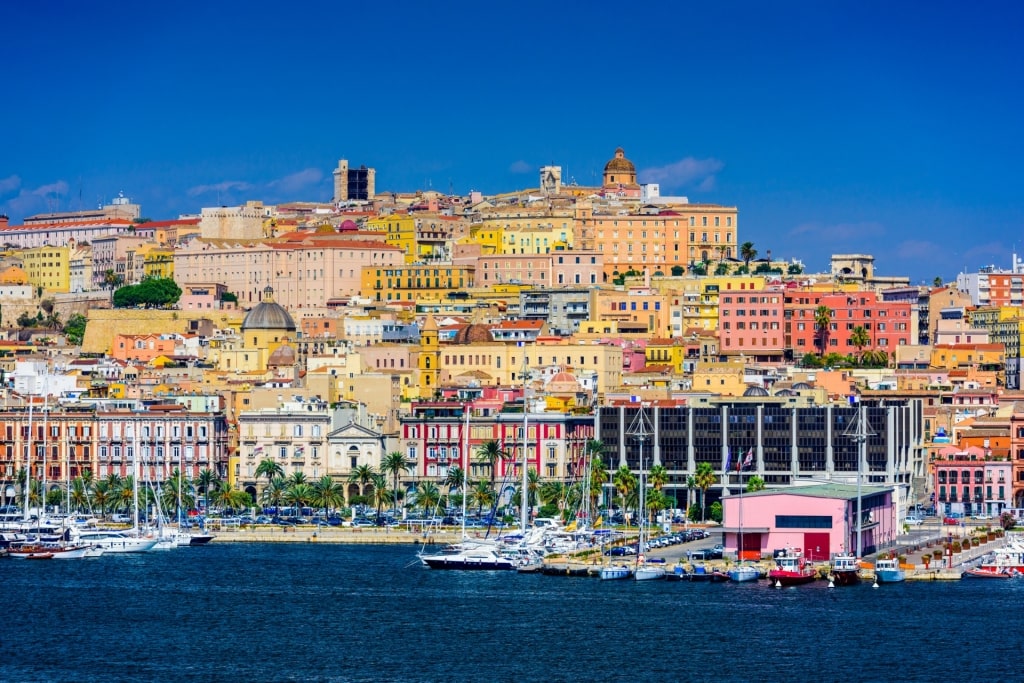
Cagliari, Sardinia
The architecturally mesmerizing Cagliari, capital of Sardinia, is considered by many to be one of the most fascinating coastal towns in Italy.
One of the biggest draws here, apart from the superb views over the Golfo di Cagliari, is Il Castello citadel, perched atop a dominating hill. This upper castle is marked by two impressive-looking 14th-century watchtowers; the Elephant and San Pancrazio towers.
The hilltop area also features a second-century Roman amphitheater, once capable of seating 10,000 souls. Just southwest of the amphitheater, you’ll find the Orto Botanico di Cagliari (botanical gardens), with approximately 2,000 species of Mediterranean plants, plus rare flora and succulents from around the globe.
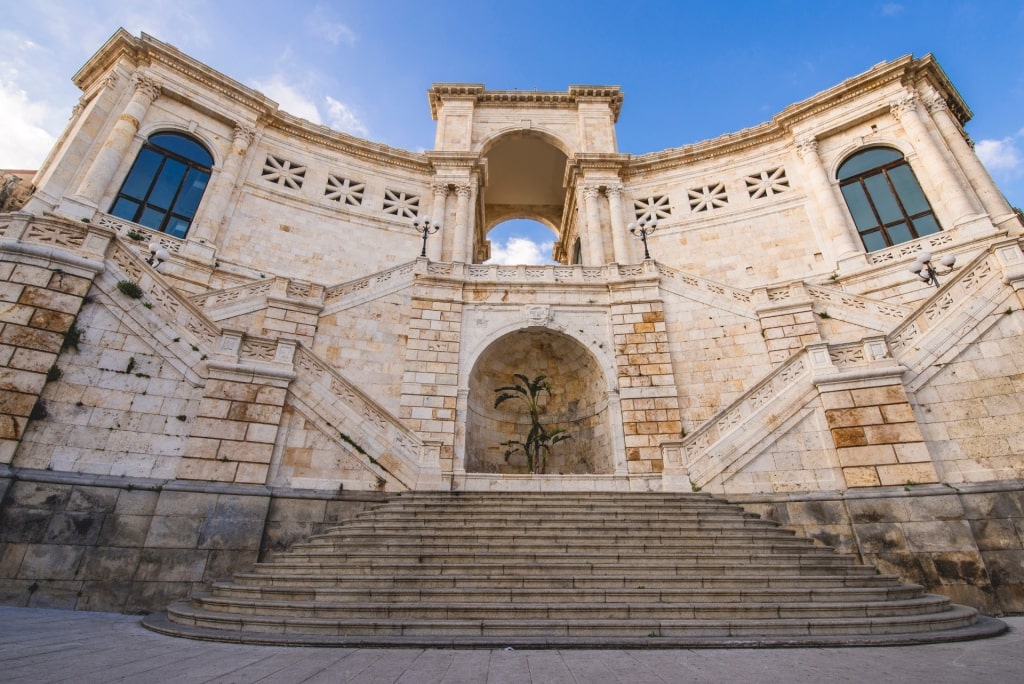
Saint Remy Bastion in Cagliari, Sardinia
Other notable sites in Cagliari include the limestone Saint Remy Bastion in the Old City, located at the hilltop Piazza Costituzione. Saint Remy Bastion, celebrated for its awe-inspiring beauty, large central arch, and esplanade rooftop, was built to link the Castello and Villanova quarters to one another.
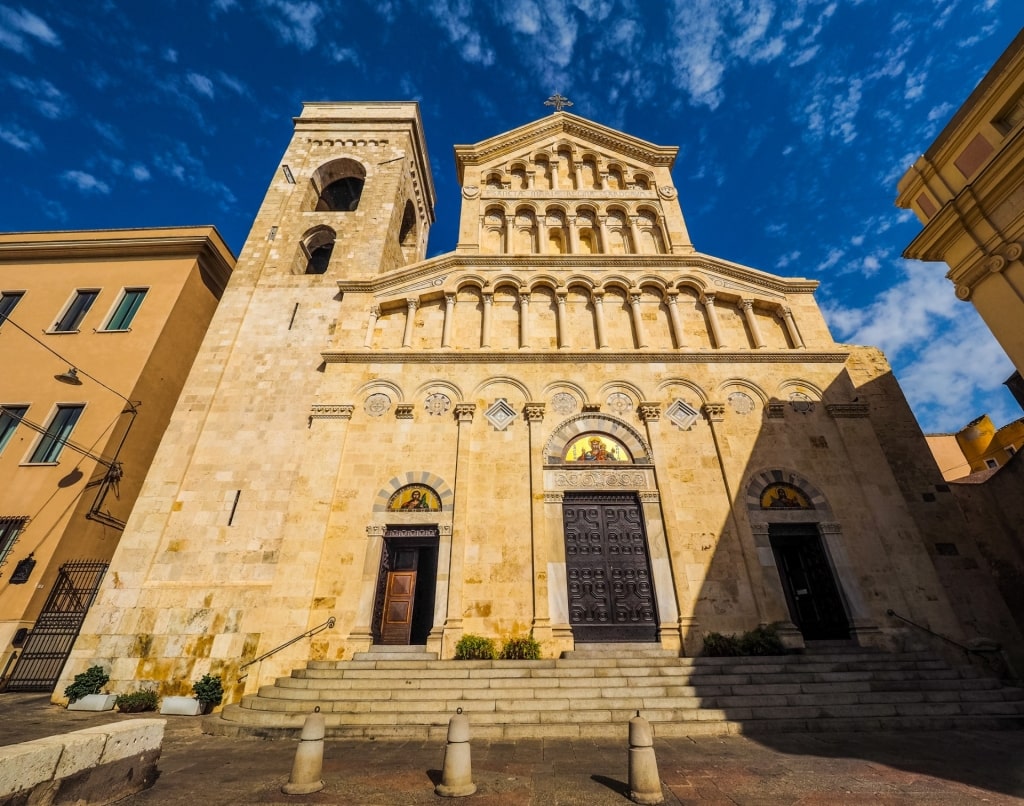
Cathedral di Santa Maria in Cagliari, Sardinia
If you’re a fan of baroque adornments, visit the 13th-century Cathedral di Santa Maria, next to the Piazza Palazzo. Then, when you get a chance, find a bar or outdoor café, order a glass of Limoncello Di Sardegna, and indulge in some people-watching to see how Sardinians go about their daily lives in Cagliari.
Read: Why Visit Sardinia
Venice
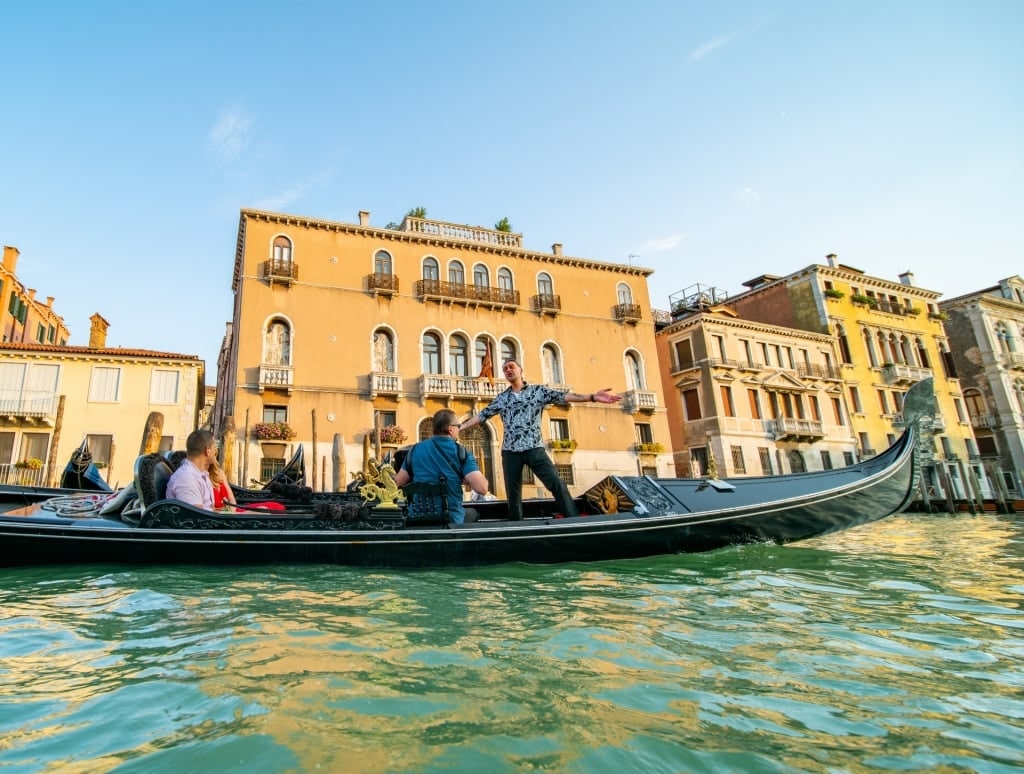
Venice Grand Canal
While Venice is more of a “floating” network of islands and canals than a typical town, its littoral pedigree is unparalleled.
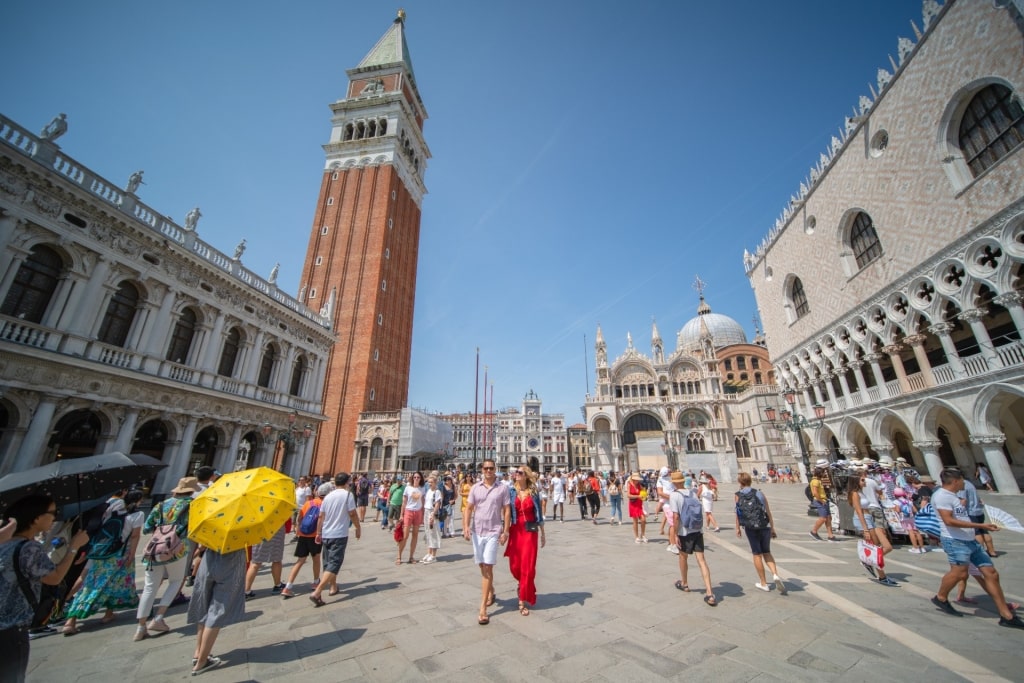
St. Mark’s Square, Venice
Located in the Veneto region in northeastern Italy, Venice’s 118 smallish islands are home to iconic sites like the massive St. Mark’s Square.
This lively square hosts the renowned and much-photographed Byzantine Basilica di San Marco, with its four bronze horses mounted on the façade, just above the basilica’s central arch.
Gondola rides through the canals and walks across the city’s bridges to gasp at the beautiful views are a must, even if you only have a day in Venice. Some of the bridges you may want to check out include the Doge’s Palace Bridge of Sighs, and the Rialto Bridge, which stretches across the Grand Canal.
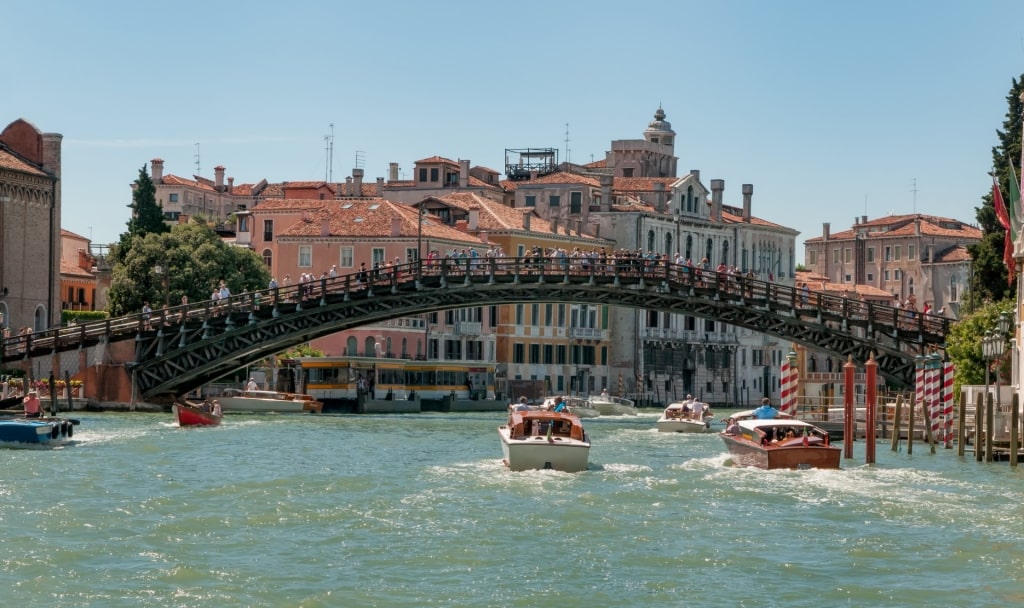
Ponte dell’Accademia, Venice
The Ponte dell’Accademia is a lovely span leading to the Dorsoduro university district. Dorsoduro is an area with an artsy, laid-back vibe, filled with restaurants and delightful little shops.
You can drop by the Galleria dell’Accademia—one of the best art museums in Italy—and the Academy of Fine Arts to immerse yourself further in the creative ambiance of the quarter.
The Palazzo Ducale is another must. This intricate palace in Venetian gothic style, former home to the rulers of Venice, is where Giacomo Casanova was imprisoned in 1755. Take a behind-the-scenes tour to marvel at the interiors and learn the secrets of the palace.
Portofino
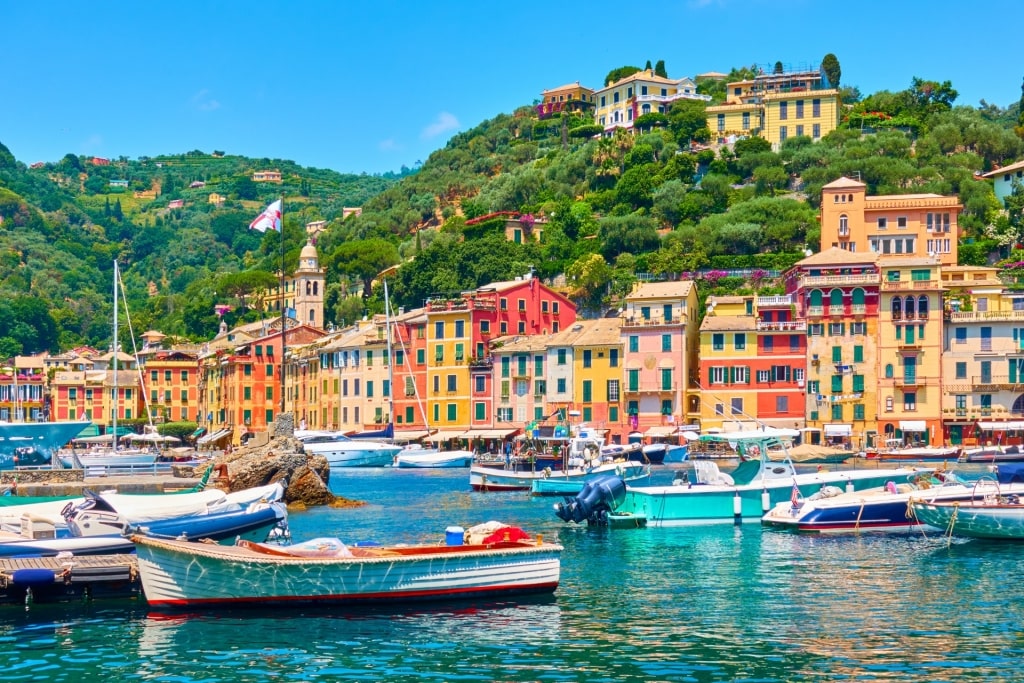
Portofino
On the Italian Riviera, in the Liguria region, you’ll come across several Italian seaside towns worth visiting, including the five villages that make up Cinque Terre, plus the swanky, pastel-tinted Portofino.
Portofino is a former fishing village and small harbor where the rich and famous now come to play. Marked by slender buildings and houses in gelato shades arranged around the curved harbor, this destination is known for its chic character, lush, tree-lined hills pushing up against the town, and superyachts that gravitate here every summer.
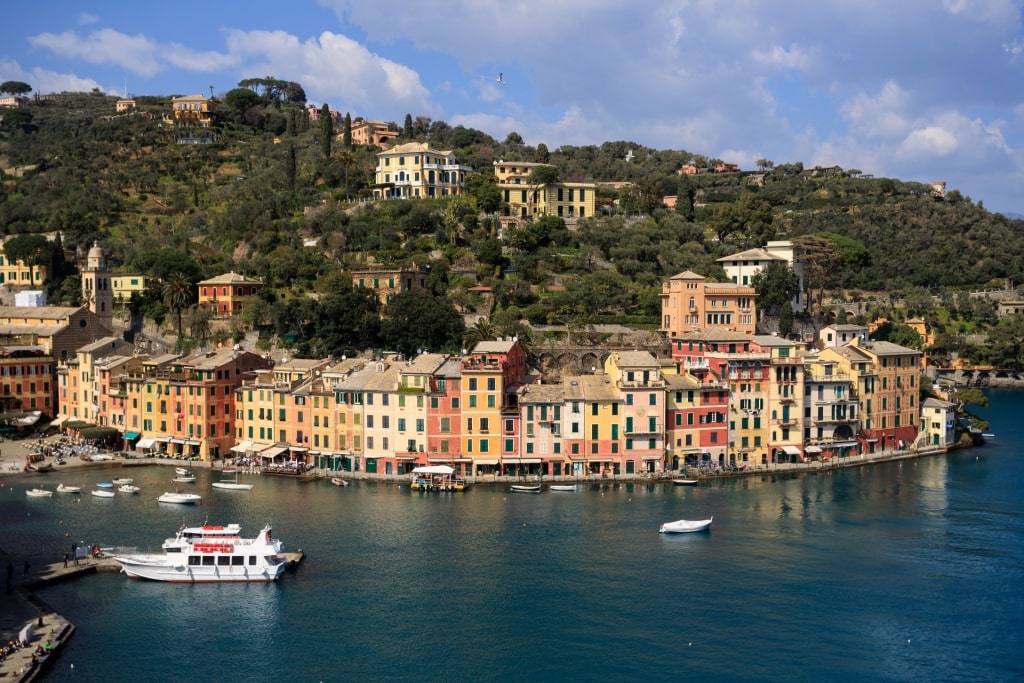
Piazzetta, Portofino
One of the best things to do in Portofino is to wander around the village’s Piazzetta, which is the main square, located near the water, browsing the designer shops and stopping for gelato.
If you want to gain a bit of elevation, hike up to the small clifftop church of San Giorgio. This yellow Romanesque Catholic church has been rebuilt several times since the 12th century and offers expansive views across the Marina di Portofino.
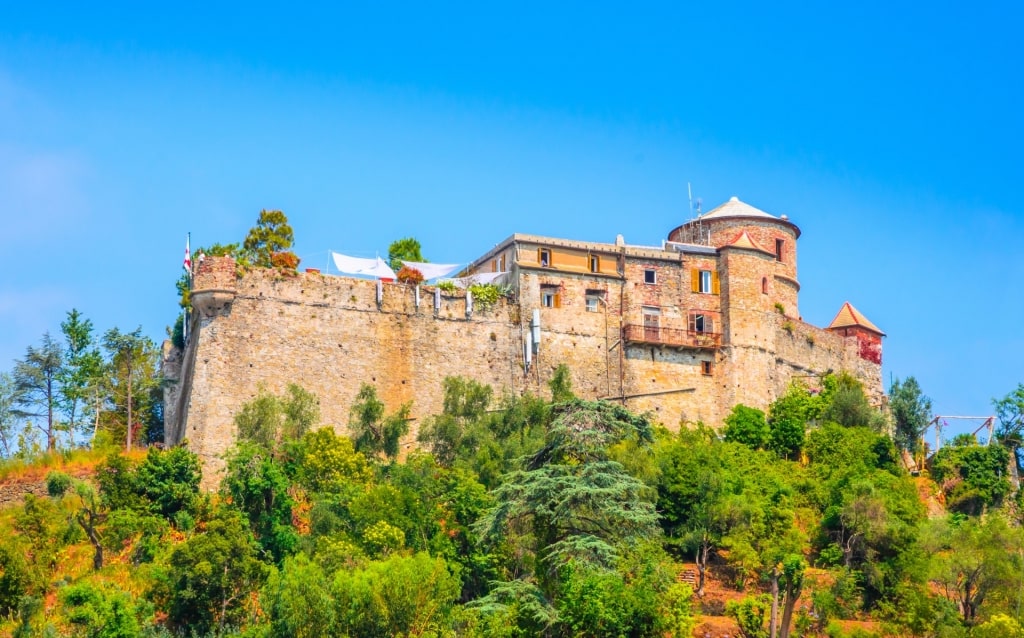
Brown Castle, Portofino
Brown Castle is a 12th-century fortress that was built to protect the Gulf of Portofino against pirate attacks. The castle is surrounded by even more greenery, and due to its lofty position, comes with wonderful vistas of the town below.
Alternatively, trek out to Faro di Punta del Capo, or the Portofino Lighthouse, which isn’t too far from the castle. Faro di Punta del Capo serves up breathtaking views of the sea, and the waves foaming at the base of weathered cliffs.
Manarola, Cinque Terre
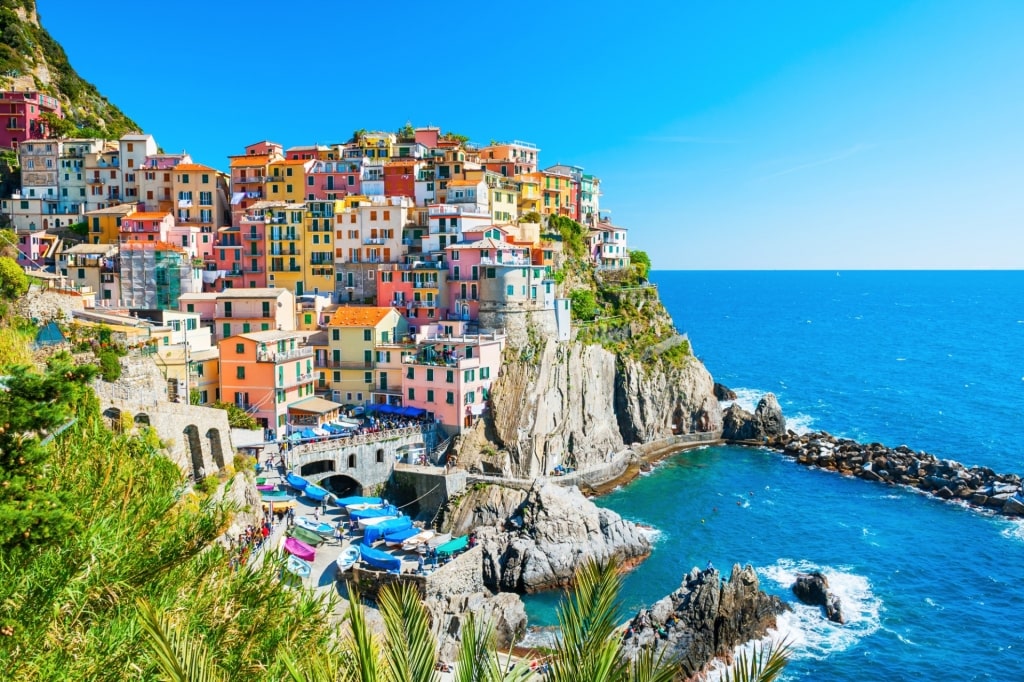
Manarola, Cinque Terre
Cinque Terre and her five villages (Corniglia, Manarola, Monterosso, Vernazza, and Riomaggiore) are less than a two-hour drive from Portofino.
And while all of the small towns and hiking trails linking these pretty villages together along this terraced, seaside UNESCO World Heritage Site are worth experiencing, if you only have time to visit one, you should probably head to Manarola.
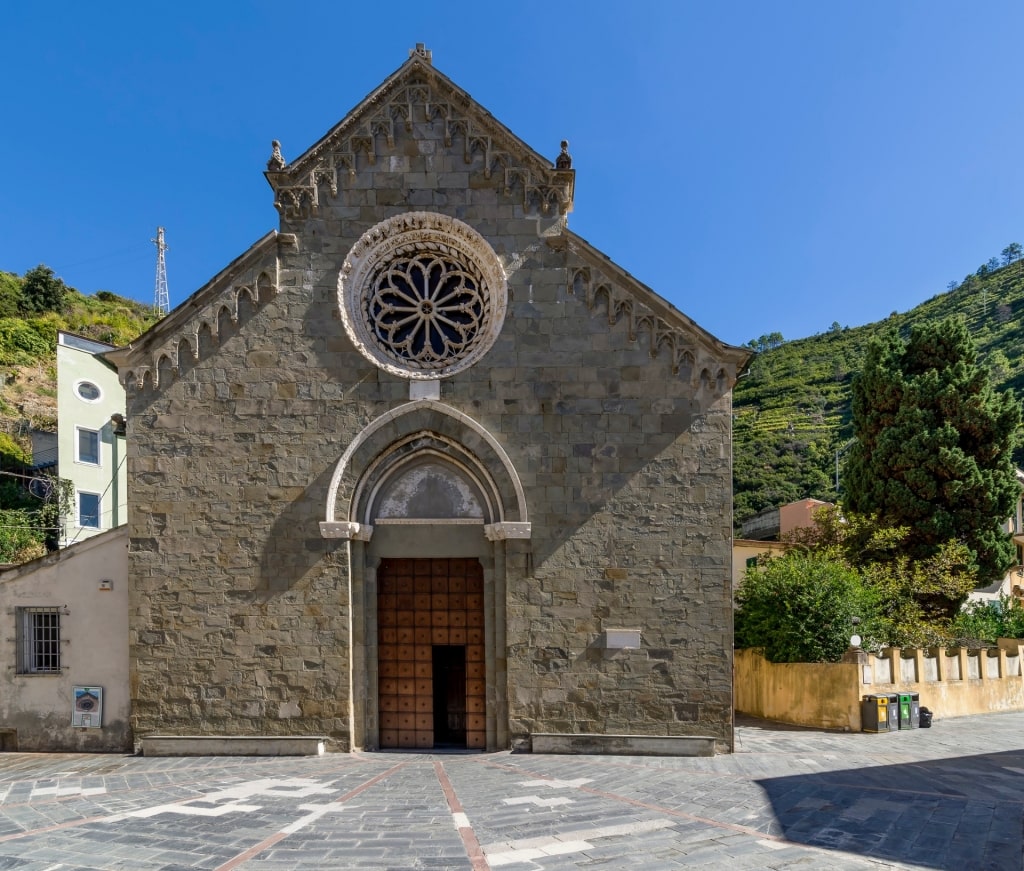
Chiesa di San Lorenzo church in Manarola, Cinque Terre
One of the most romantic places in Italy, Manarola is an enchanting little town seemingly clinging to the cliffside.You can visit the 14th-century Chiesa di San Lorenzo church, as well as the 16th-century San Lorenzo watchtower in this tiny village.
One of the real treats in Manarola is to order a fried seafood served in a paper cone, a local specialty, or a glass of Sciacchetrà dessert wine, and some cheese.
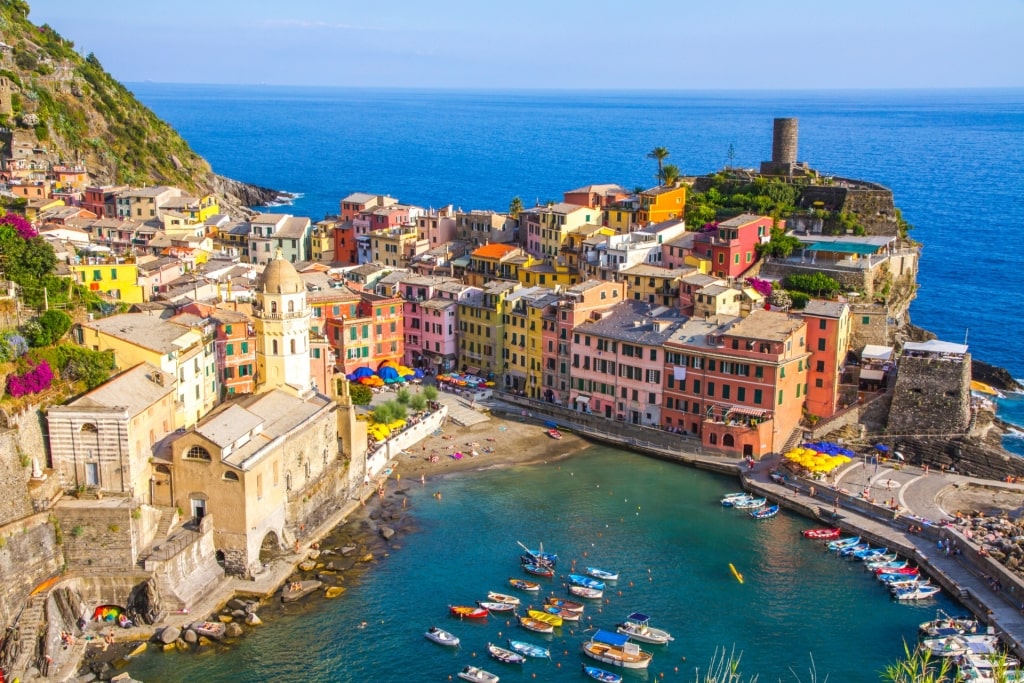
Vernazza, Cinque Terre
Vernazza and the other towns of Cinque Terre are equally beautiful destinations worth visiting, all with slightly different atmospheres.
If you have time, you can hike the relatively short but steep “path of love” that connects Manarola to Riomaggiore, another of the Cinque Terre villages, which will let you absorb even more of this magnificent slice of Italian coastline.
Naples
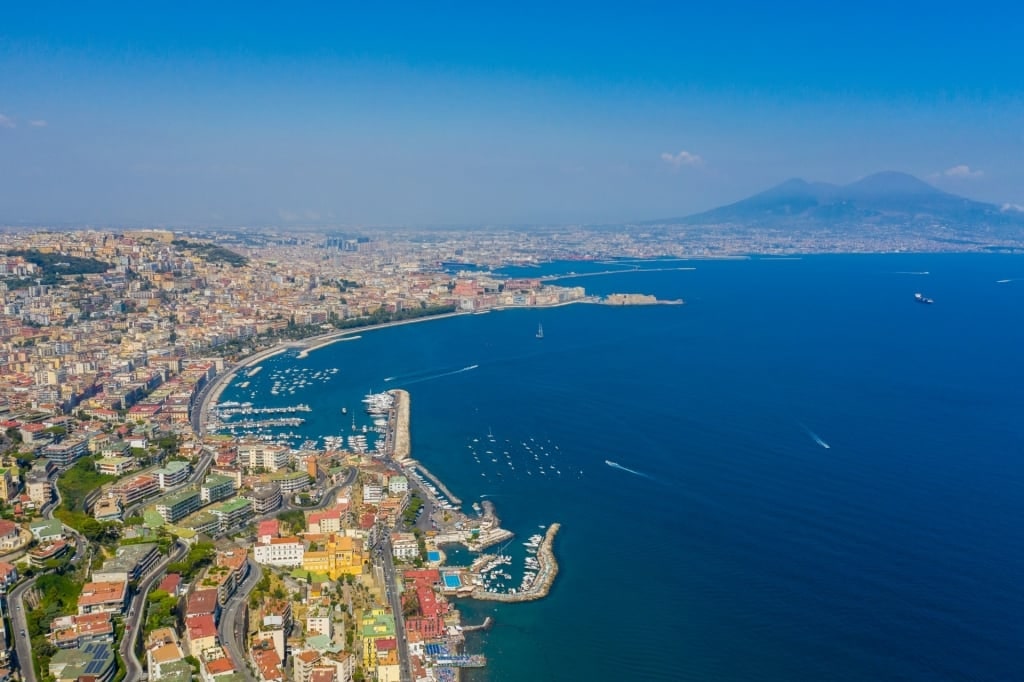
Naples
For some, Naples is a gorgeous, chaotic jumble of history, culture, graffiti, architecture, seaside allure, pizza, and urban life without the gloss of some of Italy’s less gritty destinations. The unpolished beauty here has, without a doubt, captured the heart of many who have visited.
If you’re headed to the Amalfi Coast, chances are you’ll arrive in Naples first, known as one of the best food cities in Italy. And since you’re already here, you should definitely see what this city, with its rich culinary traditions, has to offer.
The first stop for you might be Spaccanapoli, a busy, narrow road that cuts through the historic center. This street is full of bars, boutiques, cafés, small shops, Neapolitan pizza joints, and other eateries, and gives you an instant feel for the thrumming pulse that keeps Naples running.
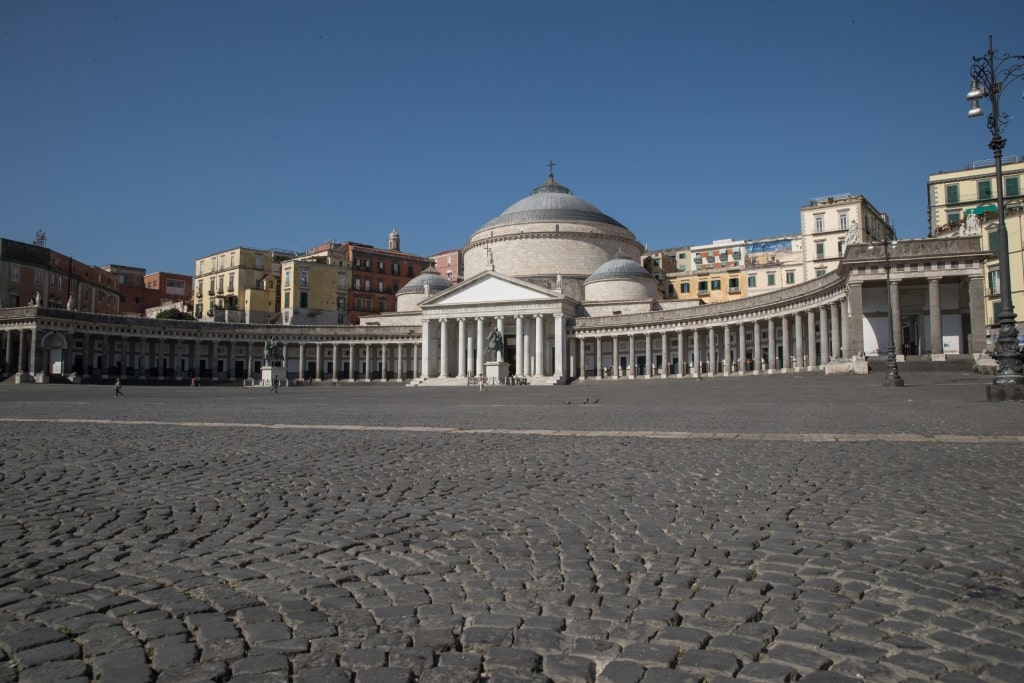
Piazza del Plebiscito, Naples
Piazza del Plebiscito is a wonderful square that showcases Naples’ more sophisticated side. This large, graceful-looking square is home to the neoclassical San Francesco di Paola Basilica, plus the Royal Palace of Naples, where you can learn more about the lavish lifestyles the royal elites enjoyed here in the past.
If castles enthrall you, one of the best things to do in Naples is to visit the 12th-century Castel dell’Ovo, or “egg” castle, the city’s oldest fortress, built next to the sea, with magnificent vistas of the harbor.
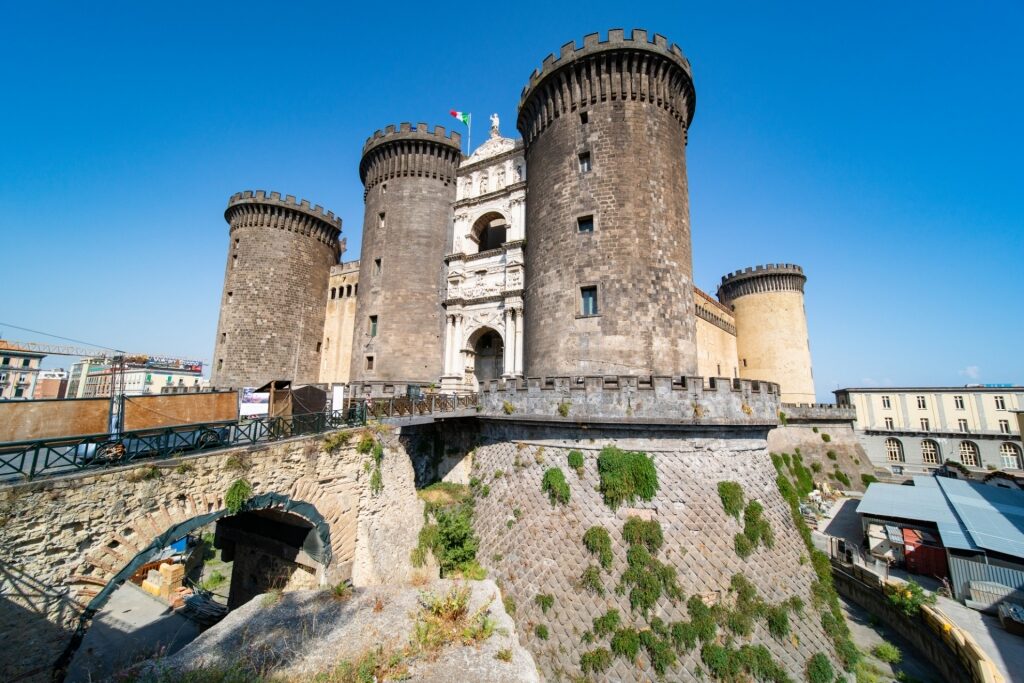
Castel Nuovo, Naples
Castel Nuovo, also known as Maschio Angioino, is a majestic-looking medieval castle that features five massive round towers made out of sturdy stone. Maschio Angioino occupies an elevated position above the city, with far-reaching views across the Port of Naples.
Positano
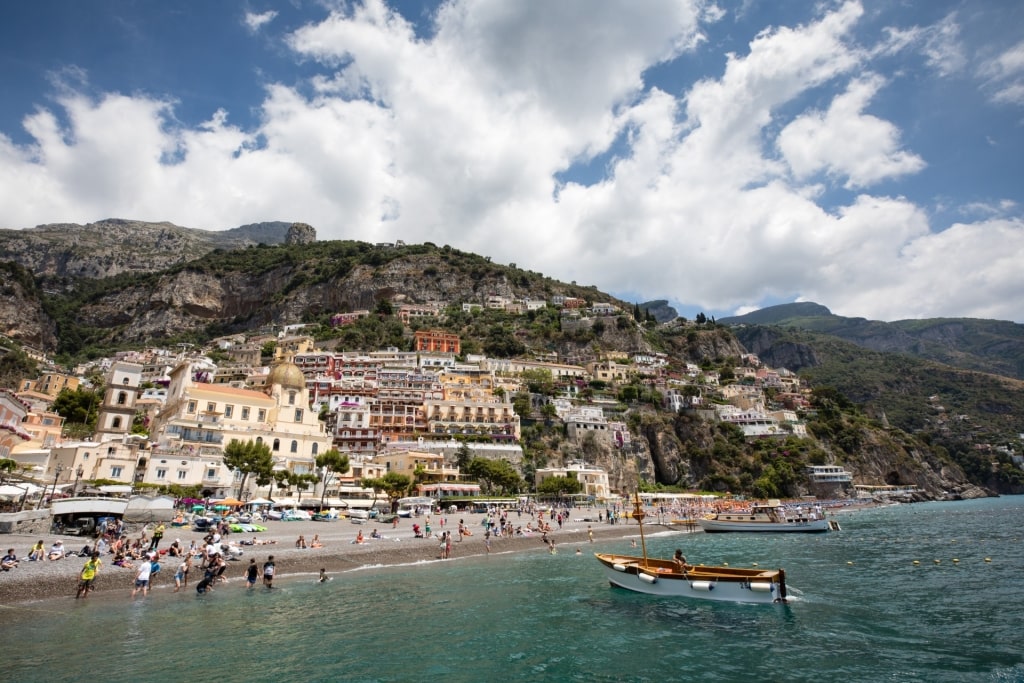
Positano
The pastel-shaded, vertically stacked buildings of Positano, one of the most beautiful Amalfi Coast towns, are recognizable the world over.
After you descend upon Positano, get ready for lots of stairs and perpendicular-oriented treks. Your legs will get a solid workout, no way around it, if you plan to explore Positano’s narrow lanes and historic center on foot.
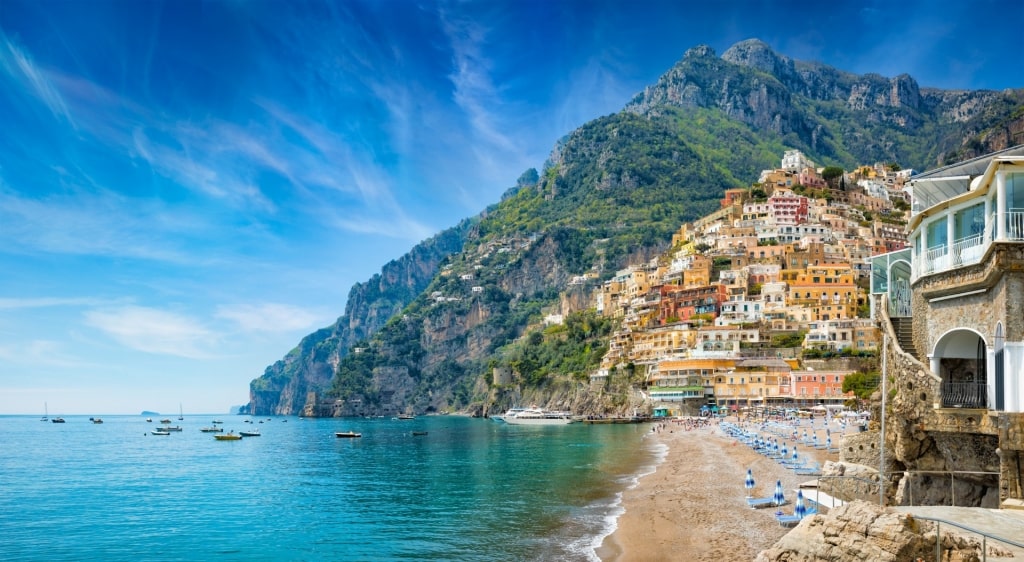
Spiaggia Grande, Positano
Some of the best things to do in Positano include shopping in local boutiques that sell the “Moda Positano” fashion style, defined by light and colorful clothing.
Hiking up and down the town’s steep stairs and visiting the town’s most popular beach, Spiaggia Grande, then making your way through the sea of parasols to go for a swim, rate highly as well.
Time allowing, try to visit Positano’s baroque Church of Santa Maria Assunta, located in the flatter part of town, to view the iconic Byzantine Black Madonna. Legend has it that the Madonna was brought to Italy’s western shores by repentant Saracen pirates.
Amalfi
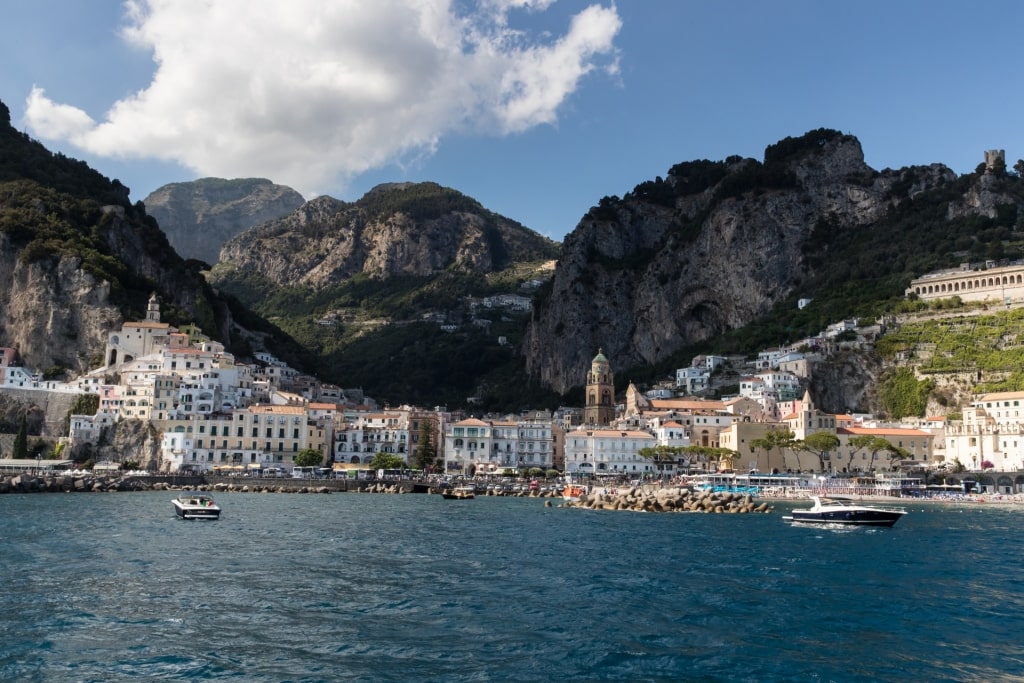
Amalfi
Gorgeous Amalfi, where colorful houses cling to cliffs that plunge into the sparkling Mediterranean, gives its name to the dazzling Amalfi Coast.
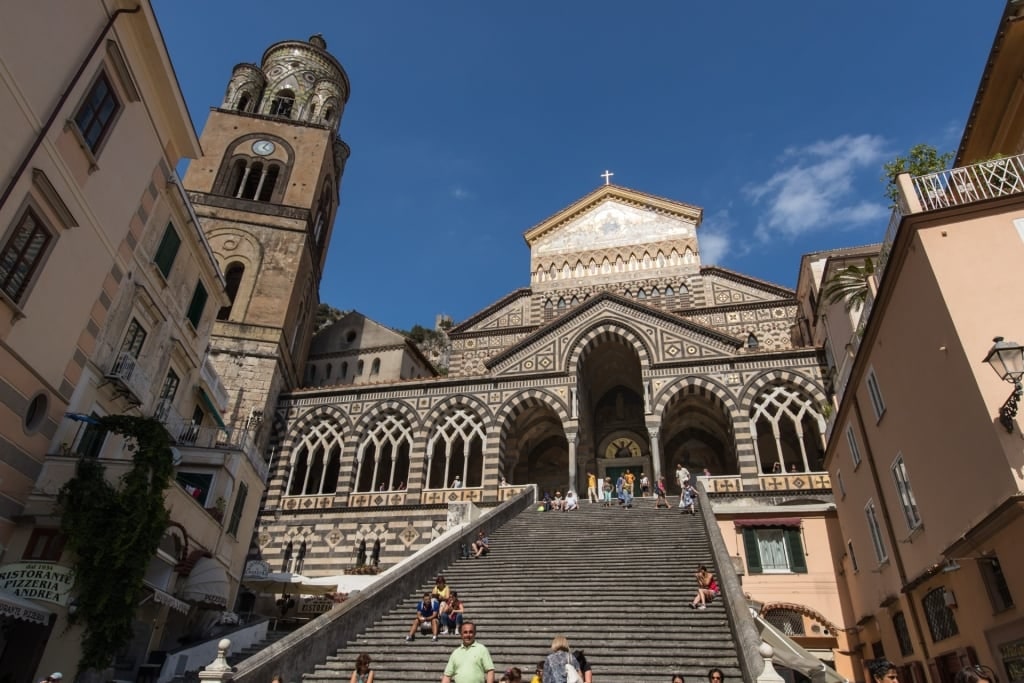
Duomo di Amalfi Cathedral
Amalfi Town’s Piazza Duomo is the main square, bubbling with life, places to eat, and shopping opportunities. The medieval Duomo di Amalfi Cathedral, along with the St. Andrea fountain, are both located next to the piazza, with the cathedral and its grand staircase dominating the square.
You can wander around Amalfi’s port, noting the medieval watchtowers there, visit the Arsenal maritime museum, and then stroll along the main Ruga Nova Mercatorum (Via dei Mercanti) road and browse the many shops there.
Catania, Sicily
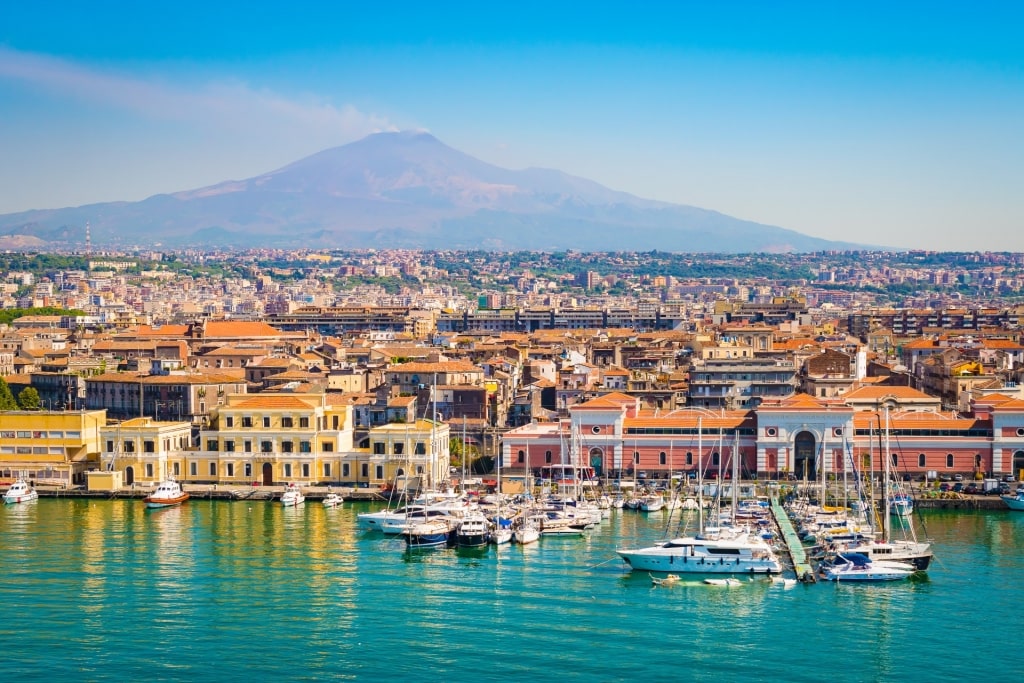
Catania, Sicily
Catania, with Sicily’s brooding volcano, Mount Etna, providing a dramatic backdrop, rates as one of the most unique coastal cities in all of Italy.
The city’s historic center, chock-full of Sicilian baroque architecture, is a UNESCO World Heritage Site; you’ll likely spend a lot of your time here. The baroque love affair began after reconstruction efforts kicked off following the region’s devastating earthquake in 1693.
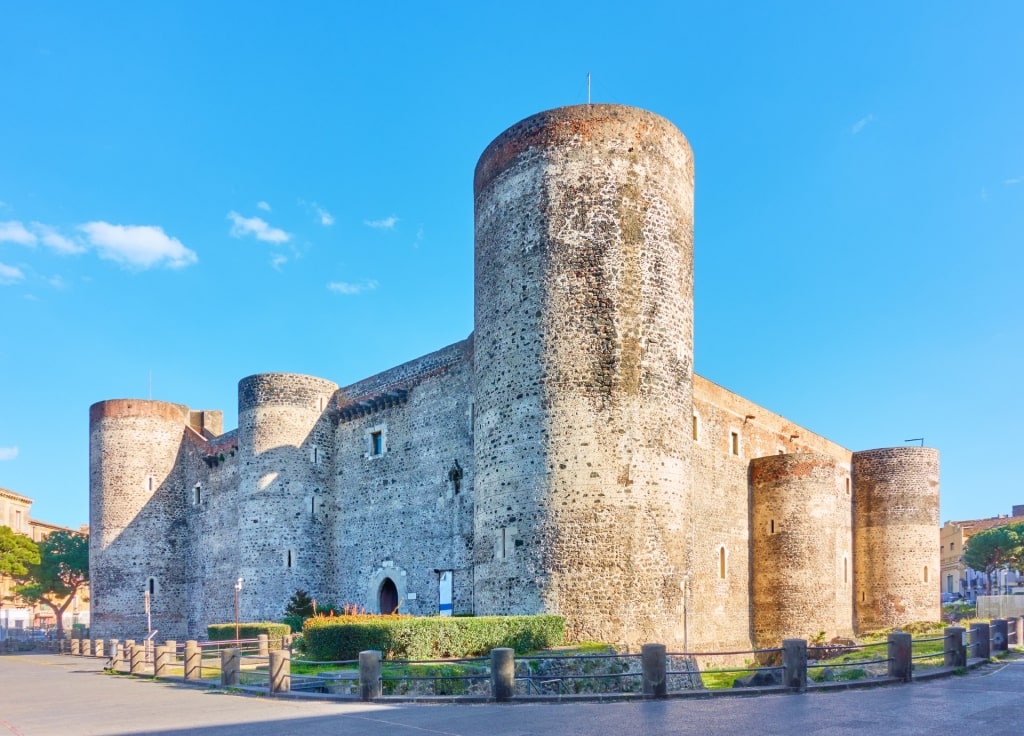
Ursino Castle in Catania, Sicily
A few of the places to visit include the 13th-century Ursino Castle, built by Emperor Frederick II to guard the city against attack.
Architecture buffs captivated by Sicilian baroque will want to check out the Basilica della Collegiata, as well as the massive San Nicolò l’Arena Benedictine Monastery, plus the Church of San Nicolò l’Arena, which are all prime examples of this ornate architectural style.
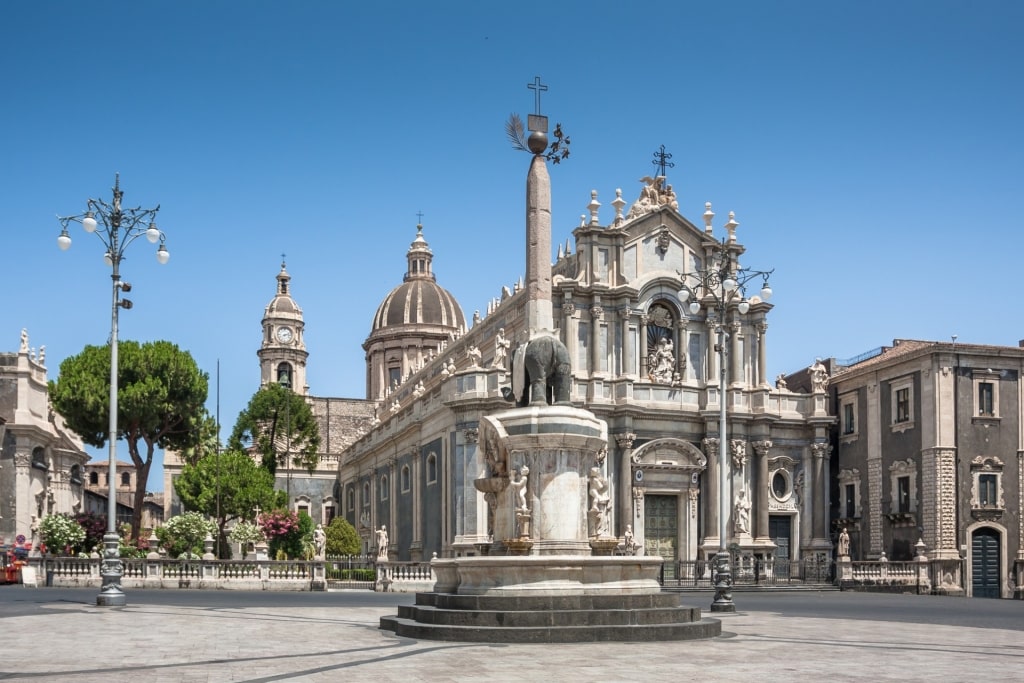
Piazza del Duomo in Catania, Sicily
Make sure you allot time to roam around Catania’s beating heart, the Piazza del Duomo, where you can appreciate the square’s basalt lava Elephant Fountain, with an Egyptian obelisk mounted atop the pachyderm’s spine.
The basalt elephant is an important symbol of Catania, with purported magical abilities. The large piazza is also home to the Norman Saint Agatha’s Cathedral, rebuilt after the 1693 earthquake.
Read: Best Places to Visit in Southern Italy
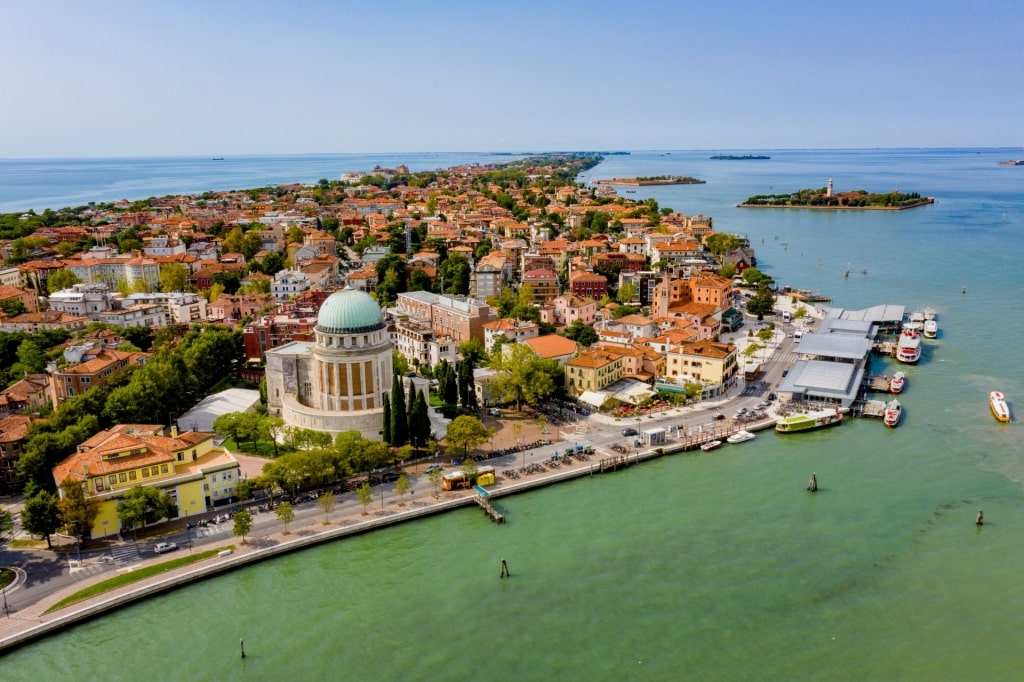
Venice
If you’d like to visit some of these amazing Italian coastal towns yourself, browse Celebrity’s cruises to Italy, then start planning your next incredible voyage to the Mediterranean.



